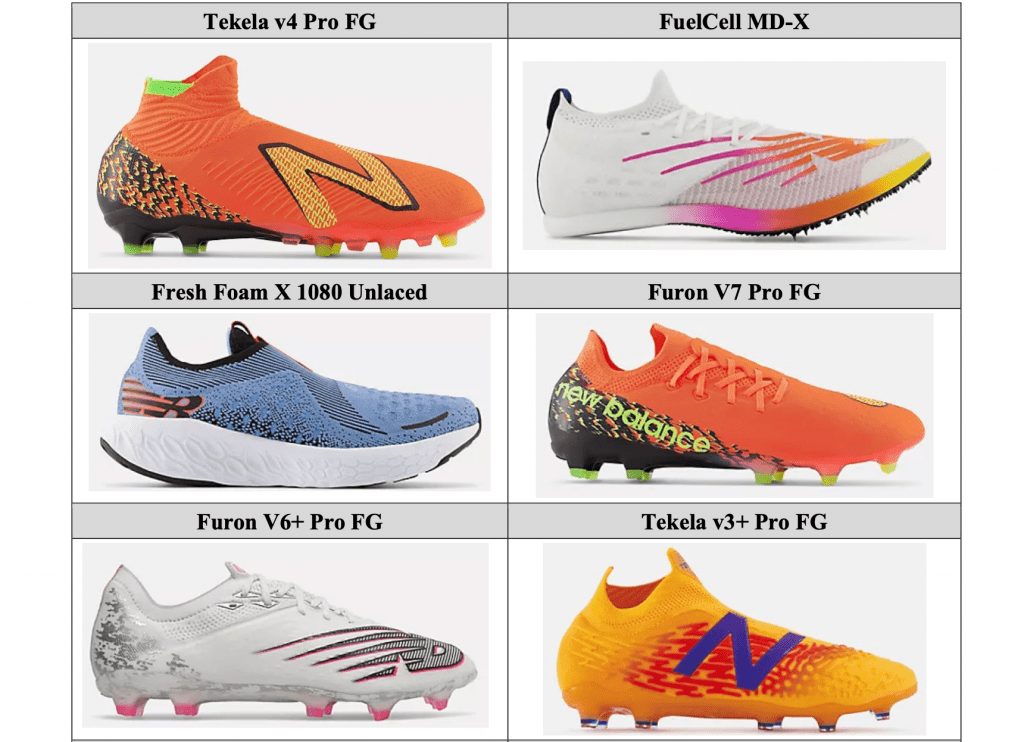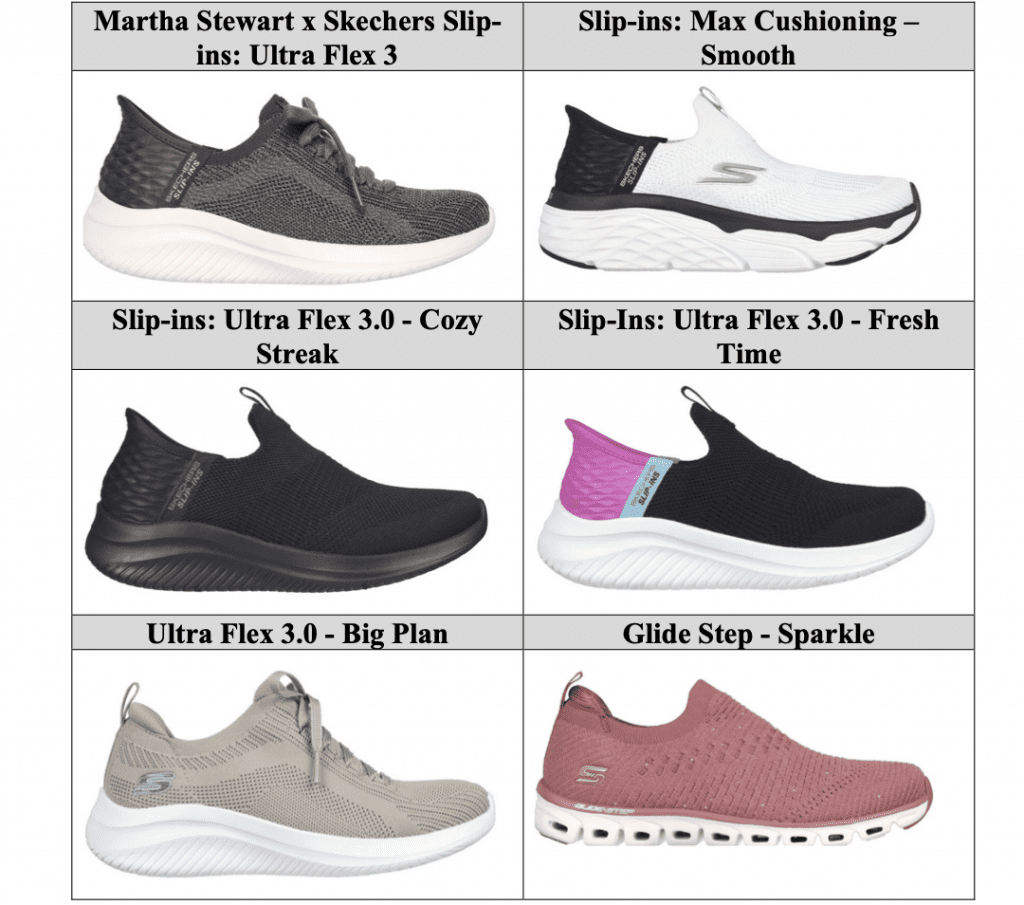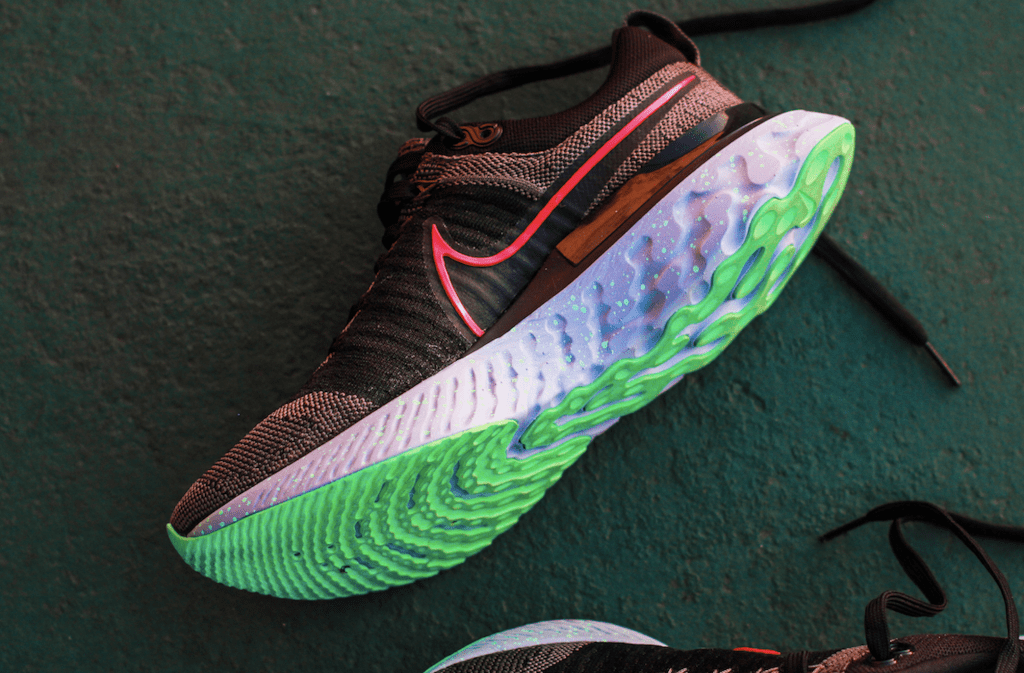Nike is waging two new lawsuits, accusing fellow sneaker-makers New Balance and Skechers of co-opting the “game-changing technology” behind its Flyknit footwear. In complaints that it lodged in federal courts in Massachusetts and California on November 6, Nike claims that due to the success of its Flyknit tech (which “provides a novel method of designing and manufacturing shoe uppers that enables Nike to create footwear with excellent performance, design, and aesthetics,” while also reducing materials and waste), many of its competitors “have copied and made unauthorized use” of the Flyknit tech. Among them: New Balance and Skechers, which Nike alleges are infringing its patents in the footwear technology.
In its complaint against New Balance, Nike asserts that the Boston-based footwear company has used its Flyknit technologies without authorization. “Despite several communications from Nike, New Balance has refused to cease its infringement of Nike’s patents (8,266,749; 8,898,932; 9,060,562; 9,510,636; 9,730,484; 9,907,350; 9,918,511; 9,924,758; and 11,707,105). Instead, New Balance has only escalated the scope of its infringing activities,” according to Nike, which points to almost two dozen New Balance sneakers models that it argues infringe claims of its Flyknit patents, including the Fresh Foam More Trail v3, Fresh Foam X More v4, FuelCell SD100 v5, and the XC Seven v4, among others.

By “making, using, selling, offering to sell, and/or importing [these sneakers] in this District and elsewhere in the United States without the consent or authorization of Nike,” the Swoosh claims that New Balance has infringed, and continues to infringe, a number of its utility patents, which generally extend to “a method of manufacturing a knitted component for an article of footwear” and “an article of footwear having an upper and a sole structure secured to the upper.”
At the same time, Nike maintains that Skechers has “likewise used [its] Flyknit technologies without authorization,” noting that this is “not the first time Nike has enforced its patents against Skechers.” According to Nike, more than two dozen Skechers models – from its Arch Fit Glide-Steps to the Skechers Ultra Flex 3.0 – make use of the claimed inventions of Nike’s patents (8,266,749; 9,060,562; 9,510,636; 9,730,484; 9,918,511; and 9,986,781), thereby, causing Nike to suffer “irreparable injury.”

With the foregoing in mind, Nike is seeking damages from New Balance and Skechers in a sum that is adequate to compensate it for the infringement, findings from the courts that New Balance’s and Skechers’ infringement “is and has been willful,” and a permanent injunction prohibiting further infringement by New Balance and Skechers and each of their subsidiaries, successors, parents, affiliates, officers, directors, agents, employees, etc.
A representative for New Balance told TFL, “New Balance fully respects competitors’ intellectual property rights, but Nike does not own the exclusive right to design and produce footwear by traditional manufacturing methods that have been used in the industry for decades. We will vigorously defend ourselves against Nike’s attempts to enforce its patents beyond their lawful scope.”
Skechers did not immediately respond to a request for comment.
THE BIGGER PICTURE: Hardly Nike’s first court battle over the “hard-earned innovations” behind in Flyknit technology, the Beaverton, Oregon-based sportswear behemoth was locked in a multi-pronged, multi-national legal battle with adidas over their respective knitted footwear tech. That clash dates back more than a decade and was prompted by adidas’ release of an allegedly similar knitted sneaker, called the Primeknit, just ahead of the 2012 Olympics. The initial patent infringement case, which Nike lodged in a district court in Nuremberg, Germany, seeking to prohibit adidas from making and selling the Primeknit, ultimately spawned more than one stateside case, an array of inter partes review proceedings, and at least one U.S. International Trade Commission investigation.
The even bigger picture is, of course, rising competition in the sneaker market, particularly when it comes to running sneakers, a segment that was worth an estimated $15 billion as of 2021. The dominance of industry incumbents like Nike, adidas, Asics, New Balance, and co., which previously benefitted from relatively little competition, is increasingly being tested by an influx of newer entrants. Younger companies – such as Hoka, On Running, and even rising Chinese competitors like ANTA – are successfully chipping away at stalwart sneaker companies’ hold on the performance running category.
At the same time, sneakers like adidas’ Adizero Adios Pro Evo 1 and Nike’s Vaporfly models, “symbolize a change that is happening in footwear,” according to Marketplace’s Kristin Schwab, who states that “while the industry used to be all about the look – think Air Jordan – it is now about the technology,” thereby, giving rise to greater challenges for market share and efforts by industry leaders to maintain their top-spots, including by way of litigation.
The cases are Nike, Inc. v. New Balance Athletics, Inc., 1:23-cv-12666 (D. Mass.) and Nike, Inc. v. Skechers USA, Inc., 2:23-cv-09346 (C.D. Cal.).











